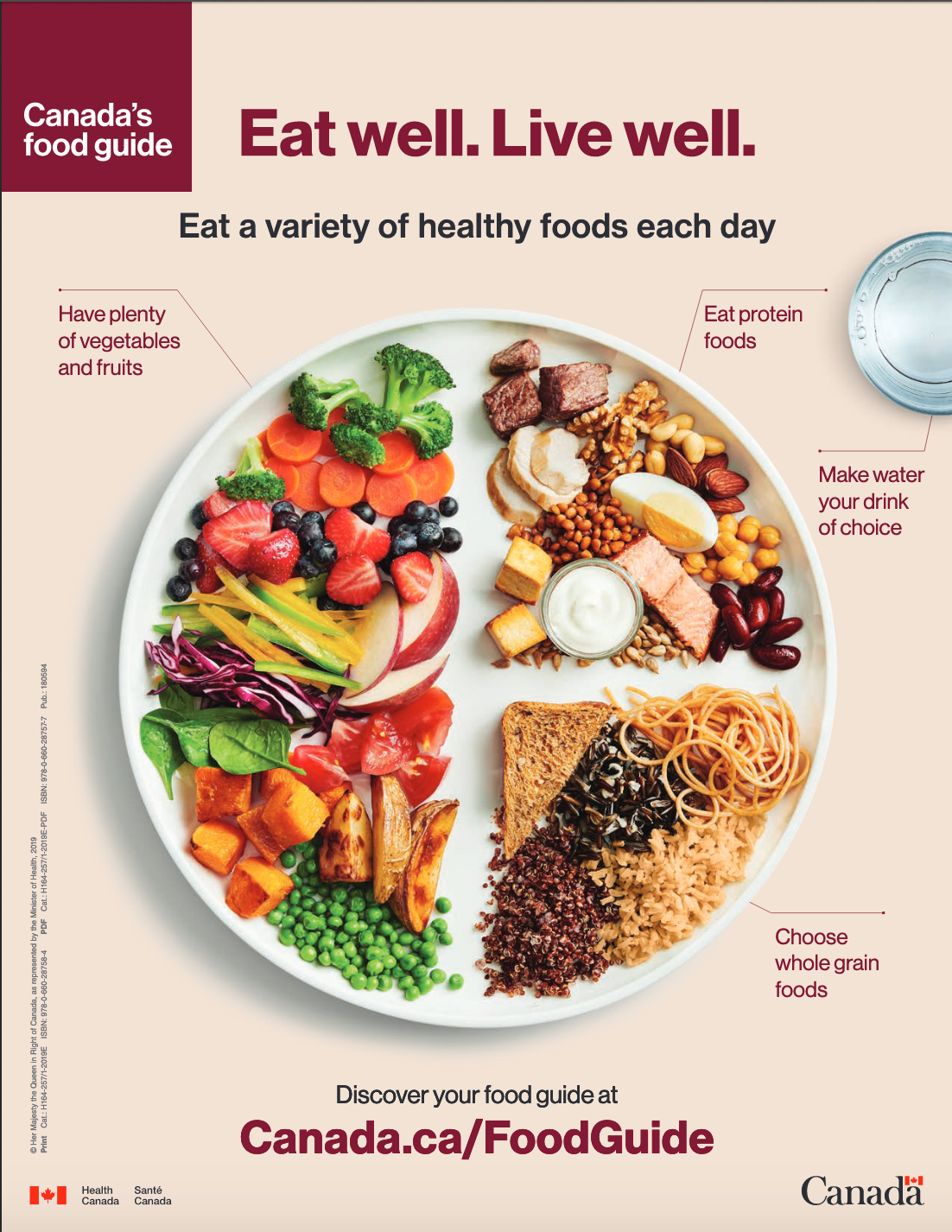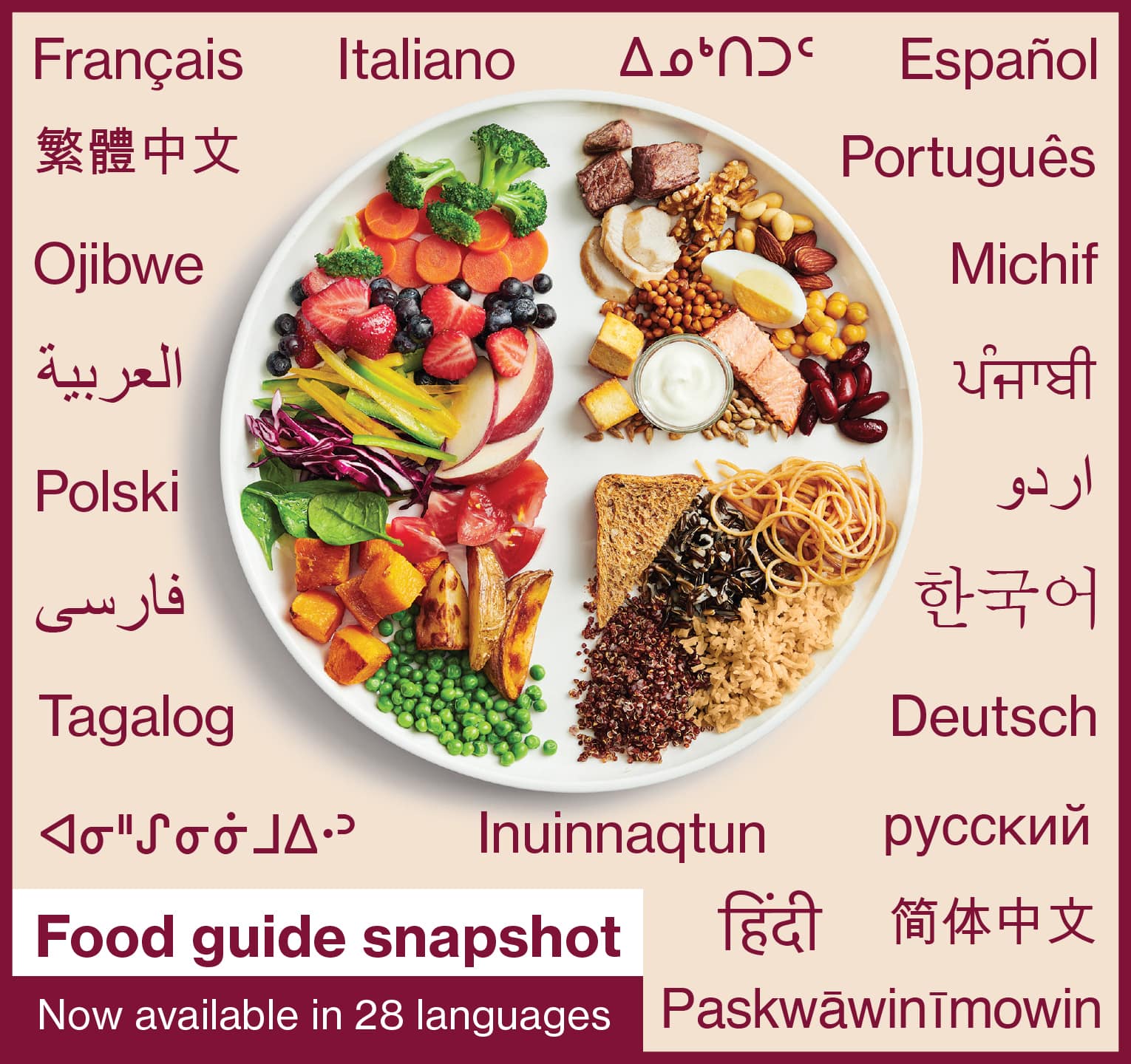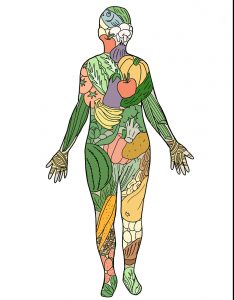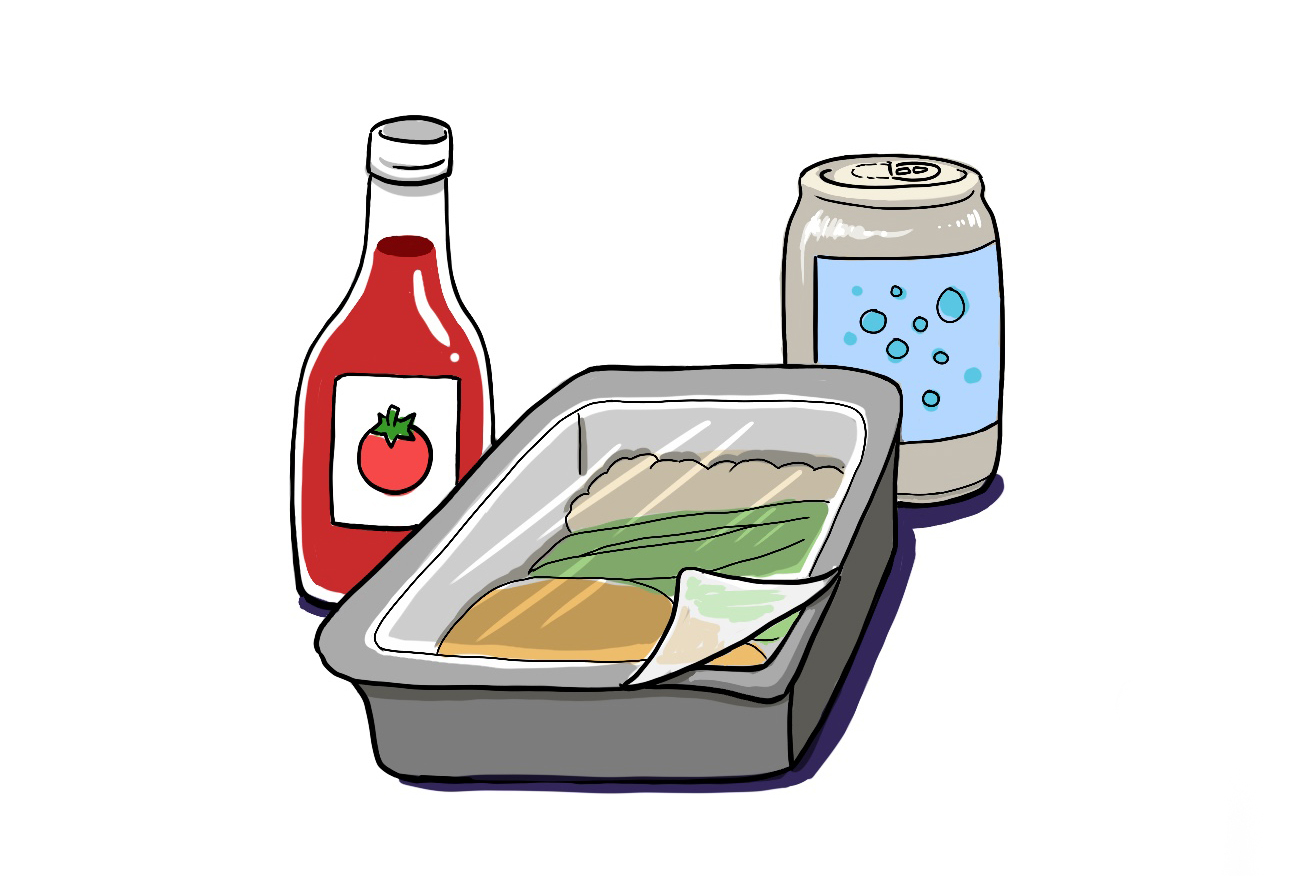Canada’s Food Guidelines
Most Canadians see the image below (Figure 1.3) when they first attempt to access Canada’s Food Guide 2019 (Health Canada, 2019b). This image is part of the “Food guide snapshot” that is often shared with clients and families as a starting point for discussion.
When scanning the plate in Figure 1.3, you will notice a colourful plate with a diverse mix of foods in which: half the plate is filled with vegetables and fruit; one quarter of the plate has proteins including tofu, legumes, nuts, seeds, yogurt, lean meat/fish and only a small amount of red meat; one quarter of the plate has whole grain foods (e.g., bread, pasta, rice); and, there is a glass of water beside the plate.

The food guide snapshot is now available in 28 languages as illustrated in Figure 1.4.


There are three specific guidelines that inform “Canada’s Dietary Guidelines for Health Professionals and Policy Makers” (Health Canada, 2019b).
As illustrated in Figure 1.5 and outlined in Table 1.1, the first guideline focuses on the integration of nutritious foods to form the foundation of a person’s eating patterns (Health Canada, 2019b). This reproduction (Table 1.1) is a copy in part of the version available at: https://food-guide.canada.ca/static/assets/pdf/CDG-EN-2018.pdf.
| Guideline 1 | Considerations |
|
Nutritious foods are the foundation for healthy eating
|
Nutritious foods to encourage
Cultural preferences and food traditions
Energy balance
Environmental impact
|
Table 1.1: Canada’s Dietary Guidelines: Guideline 1
As illustrated in Figure 1.6 and outlined in Table 1.2, the second guideline focuses on the reduction of foods and beverages that are processed and pre-packaged (Health Canada, 2019b). This reproduction (Table 1.2) is a copy in part of the version available at: https://food-guide.canada.ca/static/assets/pdf/CDG-EN-2018.pdf

| Guideline 2 | Considerations |
|
Sugary drinks, confectioneries and sugar substitutes
Publicly funded institutions
Alcohol
|
Table 1.2: Canada’s Dietary Guidelines: Guideline 2
As illustrated in Figure 1.7 and outlined in Table 1.3, the third guideline focuses on food skills and food literacy to promote healthy eating patterns (Health Canada, 2019b). This reproduction (Table 1.3) is a copy, in part, of the version available at: https://food-guide.canada.ca/static/assets/pdf/CDG-EN-2018.pdf.

| Guideline 3 | Considerations |
|
Food skills are needed to navigate the complex food environment and support healthy eating
|
Food skills and food literacy
Food skills and opportunities to learn and share
Food skills and food waste
|
Table 1.3: Canada’s Dietary Guidelines: Guideline 3
Points of Consideration
As per Health Canada (2019b), Canada’s Food Guide 2019 was developed for individuals who are two years of age and older. In addition, it is clearly noted that specialized guidance is required for those who are younger than two years of age and/or have specific dietary requirements such as protein, iron, and calcium intake among other nutrients. More information on infant feeding and healthy term infants up to 24 months can be located at: Infant feeding and healthy term infants.
Attribution Statements
Content related to the three guidelines, reflected in the three tables, was reproduced in part for non-commercial purposes, with editorial changes, from Health Canada (2019), “Canada’s Dietary Guidelines for Health Professional and Policy Makers.”

